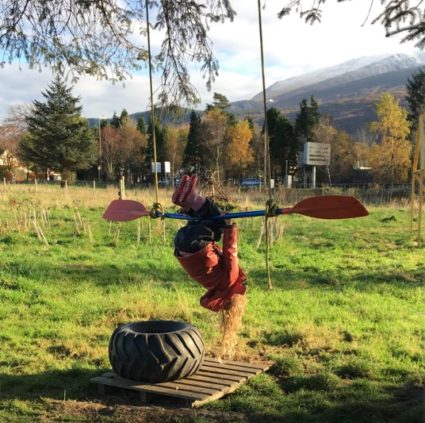
In 2015, early years outdoor education consultant, Jan White wrote a book Every Child a Mover published by Early Education. It is a fabulous read that puts physical development firmly at the heart of good early years provision. There is lots of sensible practical advice and this includes a checklist for a movement-rich outdoor environment. Whilst it’s not a definitive list, it got me thinking.
One of the most noticeable aspects of a visit to any of the Stramash Outdoor Nurseries is the children are very physically able, irrespective of gender. Thus, I thought it would be interesting to examine some of the features of these nurseries in the context of how they provide for a diverse range of movements. It is easy to presume that an outdoor nursery will provide an ideal physical space. However, two of these nurseries have been established on relatively flat green fields, not dissimilar to your average playing field. The words in italics are taken directly from Jan’s checklist on p103 of her book.
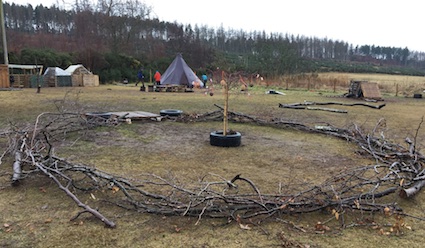
Firstly, all the nurseries provide lots of space for children to move and run without obstruction. Confined outdoor spaces restrict children’s movements. The children are free to explore their sites. No part is gated or cordoned off. Instead there are secure boundary fences. Also, all the nurseries frequently take groups for local walks to beaches, up hills, into woodland and so on. Thus the children get to experience a wide range of terrain.
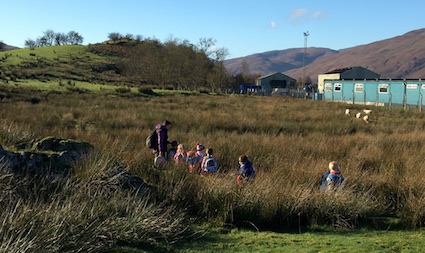
Care has been taken to provide a variety of surfaces. This includes soft grit paths, hard gravel soakaways, mud pits, bark chips and grass: worn and long. The surfaces are uneven. Tree roots and undulations in the surface quietly challenge children’s balance and motor skills. Oban has this beautiful climbing tree:
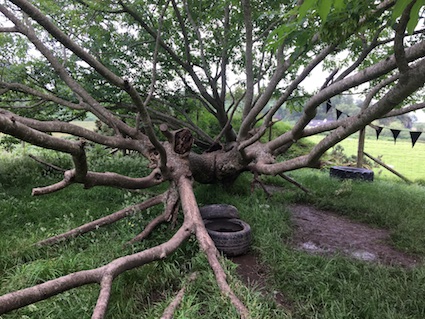
At the Oban site the children have worn a boundary path which enables them to know the area intimately. There are also many other “play paths” which have been created by the children’s movements. These are interconnecting pathways on slopes. They lead to mud pits, swings other play features and thus have the variety and challenge built in, that Jan White advocates. As the children made these paths, they are much more fit for purpose. How often do you see shortcuts created when a designer has put paths in places that do not fit the natural flow of how people use a space?

When you have flat surfaces, creating different levels and ways to move requires some creative thinking. At Elgin Stramash, one of the first things the staff have built with the children have been an open-ended set of structures which encourage children to move up and over as well as through and in-between.
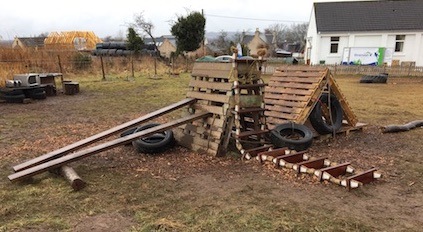
The damp, wet climate combined with a gentle slope at the Fort William site provides plenty of mud. Several months ago, a mud bath developed at the entrance that the staff and children had no choice but to create raised levels with loose parts. This provided lots of decision making in this part of their field as to which direction to travel and in which way… over the mud through stepping stones and crates… or in the mud and puddles – squelch! When I last visited, work had happened and gravel pits and pallets have reduced the mud but added a different surface. It also means that the pathways have changed again. Outdoor spaces need to change and evolve with the elements and how children play.
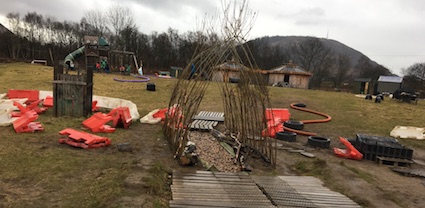
A range of balancing features is common place. At Oban, whilst there are fixed courses, the children are constantly changing the tyres, planks, ladders and other variables to create walkways and obstacles courses. Naturally jumping off is part of the process and some children are becoming particularly confident to do this.
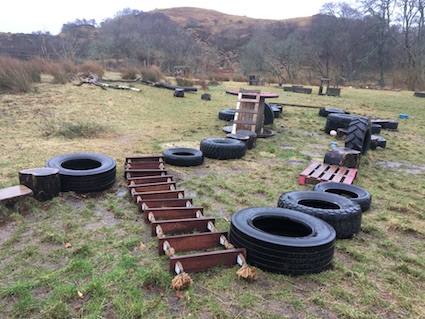
A development at the Oban site is a rope clambering area. CalMac, a local company, donated some ladders and big ropes that were no longer suitable for their use. This is now a popular place where children can clamber, climb, bounce and wriggle over, under, between and through all the parts.
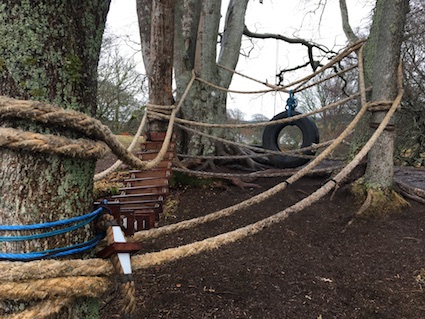
Pallets and fence posts have also been used effectively to create large vertical and horizontal surfaces on a grand scale. One old panel was originally a slide that the children turned into a painting area at Fort William.
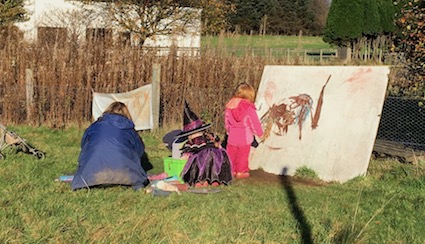
One of my favourite areas is this interactive palette play station – you can see that the children had a “hang out” fence to climb and sit on. Also, if a child wanted to make full use of the water wall, then he or she had to climb quite high up to pour the water into the top part. This part of the Fort William site also has lots of opportunities for digging and filling with the water and mud. The sand pit also provides a popular place for digging.
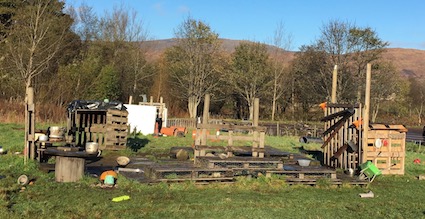
There are lots of things to lift, carry and transport, especially big, heavy and awkward items. At Fort William, the construction company building a nearby retail park donated lots of large loose parts which get moved around, usually by groups of children working together.
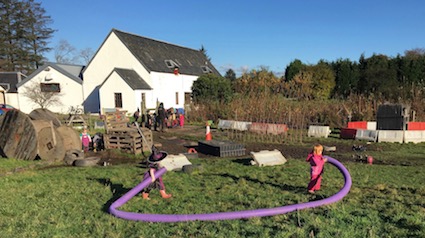
At Oban tree stumps and wooden slices were donated or cut as tree work is undertaken in nearby woods. The children were involved in carrying these from the car park into their field.

All children love to swing. Different types of swing encourage children to move in different ways and involve upper arm muscles and core body strength. This is another blog post in itself looking at the swings and moving things in the nursery. Whilst the sites are not suitable for bikes and trikes, wheelbarrows are used by staff and children to transport materials, which require a different balancing skill. On a smaller scale there is a good abundance and diversity of pots, pans and other containers for transporting and moving water, soil and other materials around.
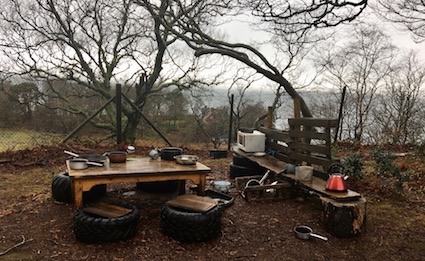
Within all the sites there are spaces for children to be alone or to rest as this is also important for physical development – having time to rest and simply be. Each site has shelter from the elements. This may be a warm tipi, as a shared social space. Oban has recently gained two huts with wood burning stoves.
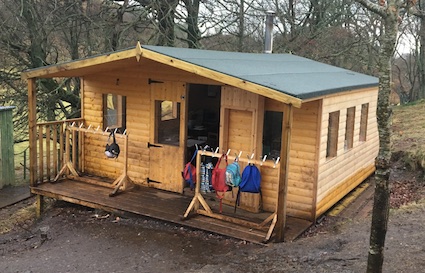
In addition there are nooks and crannies where small groups of children can simply be. I’ve blogged previously about these cable drum cubbies that also promote physical play.
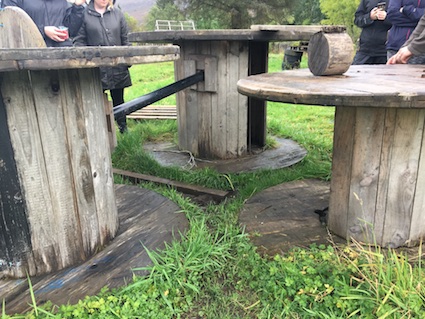
Calm, soft places to retreat from activity and to rest are available. At Elgin, the hammocks are taken into the woods so even when away from their field, if a child needs a nap it’s not a problem. The photo below is from their old site where the hammocks were situated slightly away from the main area of the nursery to provide peace. Children would regularly take themselves there for a wee lie down.
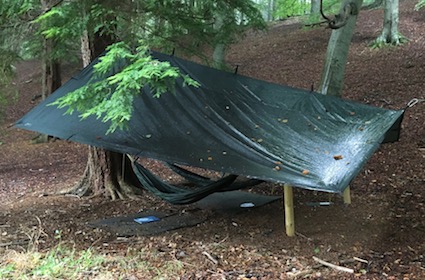
Finally, it’s worth noting that lots of outdoor nurseries operate very well without the sort of features highlighted in this blog post because they have more natural environments. Furthermore, the staff are very careful to ensure that these structures are well-built and secure. They check them frequently and regularly and ensure ongoing maintenance to keep them in good condition. This is essential when creating play structures for children to use.
For a lovely example of a standard nursery and their approach, have a look at this amazing video created by Helen McKinnon, Senior Early Years Practitioner at Middleton Park School Nursery. It was filmed during the course of one morning. So much learning and physical development in such a small space.
This blog post was originally posted in April 2018.




















An inspiring post as usual with lovely ideas for supporting different areas of development, and just plain having fun!
Thank you!